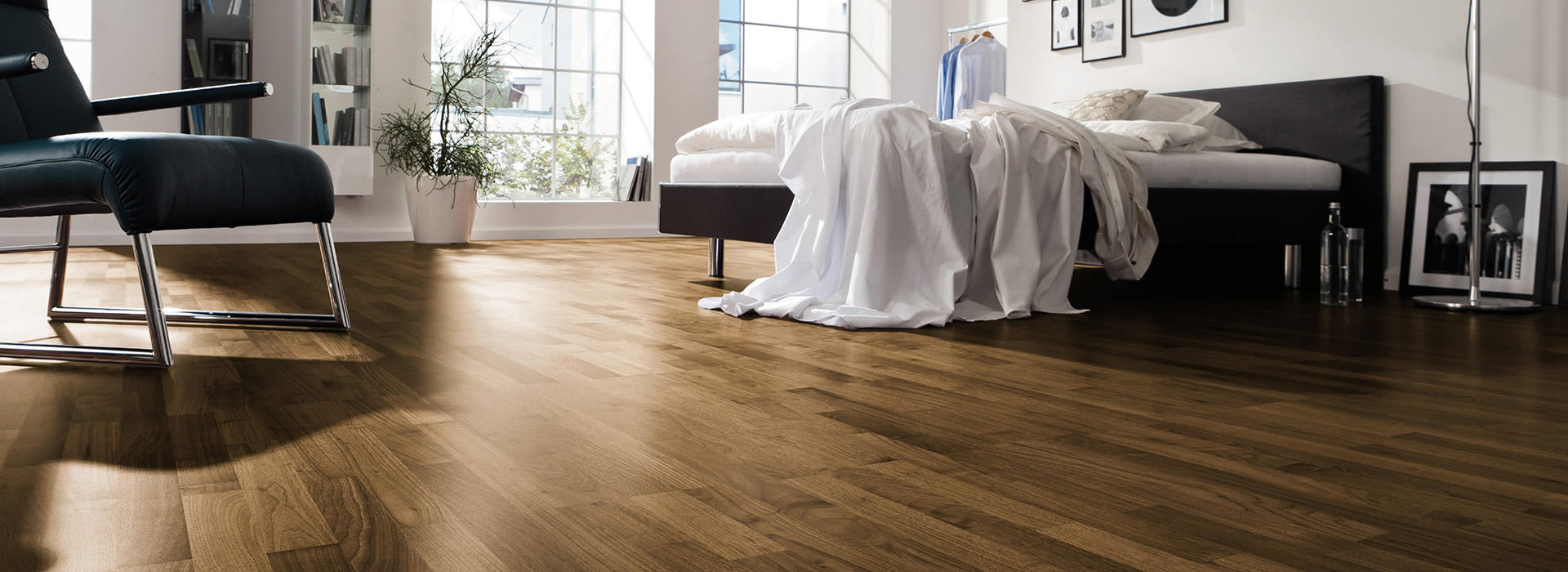When it comes to flooring, there seems to be a new trend on the rise almost every year. However, as it is with all fads, these trends tend to disappear even faster than they’ve come into the spotlight.
A trend that never seems to go away and always stands the test of time is hardwood flooring. Durable, sturdy and versatile, accompanied by exquisite craftsmanship, hardwood floors give every house class and timelessness.
But, no matter how romantic we make it sound, hardwood floors are a pretty costly investment – both in time and money. A lot of effort needs to go into the choosing, buying, installing, and finishing hardwood floors. This is why such a major renovation is often done once in a lifetime.
Here at Martin Allen, we know how important the right flooring is, as we’ve been working with hardwood for more than 20 years. With the number of questions we’ve been getting on a daily basis, considering all things hardwood, we’ve decided to come up with a short guide to the three most commonly used types of hardwood – mahogany, oak, and walnut.
With our former, current and future customers in mind, this short series of articles is meant to introduce a common wood species and its present use in hardwood flooring.
If you would read our post about Mahogany, go here, and if you would like to learn about Oak, go here.
Last, in the series of three, this article will give you some fundamental insight into the incredibly luxurious and sought-after tree that is walnut.
The widespread and diverse genus of walnut
The term walnut can refer to any tree belonging to the genus of Juglans. While all these trees bear different names, their common denominator comes from their seeds – walnuts.
There are 21 different species of walnut trees, ranging all across the world – from North America and Canada, Europe, Central and Northern Asia, as well as Japan, all the way to Argentina and its neighbouring countries in the southern hemisphere.
Although walnut trees are widespread and relatively common around the world, walnut timber is one of the most luxurious and expensive non-exotic woods available on the market. Prized for its incredible hardness and durability, as well as its intricate and complex grains and colouring, walnut has been the staple of the luxurious woodwork for centuries. The timber of choice for gun makers is one of the most popular choices for premium rifle and shotgun stocks.

The dense and intricate grains found in walnut also make this tree a favourite among prestigious car manufacturers and luxury cabinet makers.

Types of walnut
Although there are more than 20 species of trees in the walnut genus, only a select number of them are used in hardwood flooring. While some are too expensive and scarce, others have timber that is either too soft or too hard to be used as flooring.
The two most common types of walnuts are the American and Brazilian walnut. The English walnut is also widespread across the isles, but it’s rarely used in flooring.
Harder and much more resilient than its American counterpart, Brazilian walnut has always been a top-rated flooring solution for higher-end homes. Scoring over 3500 on the Janka hardness scale, Brazilian walnut is also one of the hardest woods in the world. Such hardness might seem like a preferable characteristic of hardwood used as flooring, but more often than not it is a double-edged sword.
Incredibly hardwoods are durable, but also extremely hard to work with. Hard floorboards are prone to splitting when cutting and trimming with inadequate tools, and need a steady, experienced hand when installing.
Another incredible characteristic of this exotic walnut is its fire resistance. The fibres in this hardwood are so densely packed that Brazilian walnut has the same fire resistance as concrete and steel. The densely packed fibres also prevent the boards from bending, cracking or splitting under pressure.
American walnut, on the other hand, is a much less dense tree. Ranked under 1000 on the Janka hardness scale, it’s one of the softest hardwood in both North America and the world.
But, despite its softness, American, or black walnut, as it’s sometimes referred to, is prized for its characteristics that make it both durable and easy to work with. Being soft doesn’t make this wood more prone to scratches and dents. The colours and grains do a great job of hiding any surface damage that’s bound to happen in high-traffic areas.
Black walnut comes in the same rich, dark brown colours as Brazilian walnut. Depending on the age and how the timber was cut, walnut boards often come with purplish and even olive hues. The intricate hues and grains of walnut make this timber so sought-after it rarely needs any special polishing or finishes.
But, despite its incredible features, walnut flooring isn’t the best choice for every property. Walnut floorboards are notoriously expensive, so they might not be the best option for a renovation project with a mid to low range budget. The intricate patterns of the grains and the deep, dark hues of the boards make them suitable for a limited range of rooms. Dark hardwoods, especially ones with a matte or oil finish, and different grains, can suffocate a small room. Rooms with awkward corners, pillars, dark walls or lots of furniture also won’t benefit from this luxurious flooring.
If you’re unsure walnut is the best choice for your home, send us an email to office@martinallen.co.uk, or give us a call at 01162 165 107. Our flooring experts will be at your doorstep in no time, with the type of advice and ideas that can only stem from more than two decades of experience.



Leave a Reply